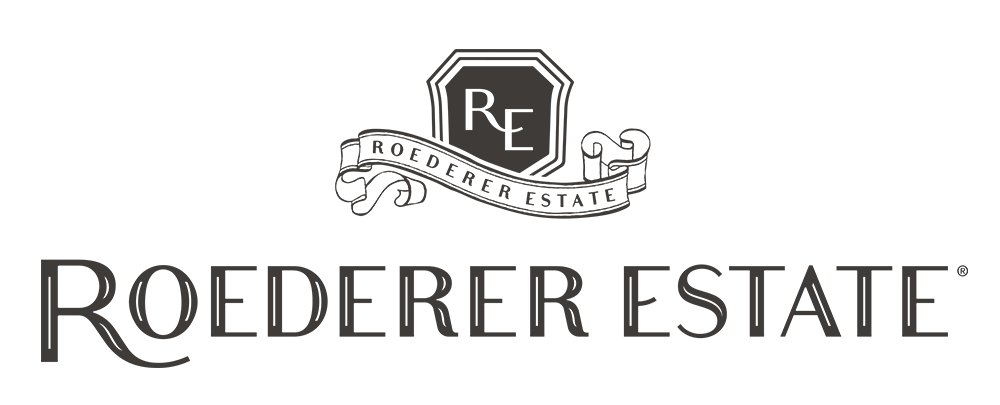Roederer Estate L’Ermitage Rosé
Anderson Valley, California, United States
Vintage:2009 (Past)
2006 (Past) | 2011 (Past) | 2012 (Past) | 2013 (Past) | 2015 (Past) | 2019 (Current)
Tech Sheet Download Download PDF with Scores Download PDF without Scores

- WE
- WA
- W&S
Reviews
The Wine Advocate 94 Points
“The 2009 L'Ermitage Brut Rosé, disgorged in February of 2017 and made with about 10 grams per liter dosage, has a pale salmon-pink color and aromas just beginning to segue from red berry and peachy fruit to notes of caramel, mushroom and pastry. The medium-bodied palate slowly opens to bright citrus flavors with energetic mousse and a long, bright, juicy finish. It's drinking well now but should continue to age well in bottle.”
Wine Enthusiast 96 Points, Cellar Selection
“This wine is extremely deep, complex and concentrated in flavor while maintaining wonderful finesse in texture. It starts with fragrant aromas of freshly baked bread and cinnamon. Those are followed by a creamy mouthfeel, pinpoint bubbles and subtle peach, white cherry and apricot flavors that are both delicate and focused at the same time, leading to a long finish. It is so tempting now but best after 2020.”
Wine & Spirits 92 Points
“This wine’s clean raspberry freshness is underlined by a salty tang and the yeasty scent of rising bread. Mouthfilling with a gentle, persistent mousse, it feels complete and integrated, a rose to pour with Dungeness crab.”
Overview
Founded in 1982, Roederer Estate is nestled in Mendocino County’s fog-shrouded, Anderson Valley. As the California property of Champagne Louis Roederer, Roederer Estate builds upon a centuries-old tradition of fine winemaking. The premium grape growing region's proximity to the ocean gives rise to a gentle cycle of warm days and cool nights, allowing grapes to mature slowly on the vine and develop full varietal character.
Among the very few California sparkling wine houses that only sources estate-grown fruit, Roederer Estate is also meticulous about all its farming decisions. The winemaking process begins with in-depth knowledge of the Estate soils to introduce open lyre trellis system or high density plantation, extends to the decision to farm vineyards organically and biodynamically, and finishes by painstakingly tracking grape maturity to achieve perfect balance at harvest.
L’Ermitage, Roederer Estate’s special Tête de Cuvée, is a sparkling wine made only in exceptional years from pre-selected, estate-grown grapes. Carrying on the tradition of Champagne Louis Roederer in France, Roederer Estate produces its sparkling wines in the traditional French méthode traditionelle and adds special oak-aged reserve wines to each blend. L’Ermitage debuted with the 1989 vintage.
Winemaking
Roederer Estate wines are made with juice from just the cuvée pressing; no première or deuxième taille is used. The concept of the vintage L’Ermitage is the same one that is used in Champagne: Only the best of the vintage is selected. These are exceptional wines that create a “noble” (special) blend that allows for longer aging, which produces a fine wine with elegance and finesse.
The rosé blend is crafted using a small fraction of red wine, from pinot noir grown on the estate, especially made for this purpose using Burgundian maceration technique that allows skin contact to extract color and aromas. This red wine brings delicate berry flavors and a nice color to further extend the L’Ermitage smoothness and subtleties, allowing for a unique tasting experience.
L’Ermitage Rosé 2009 was disgorged in February 2017.
Tasting Notes
Very delicate salmon colors are the trademark of the L’Ermitage Rosé. The aromatics are of peach pie and clove spices. With L’Ermitage Rosé 2009, mouthfeel is full of energy with bright acid and cranberry notes, a mid-palate width brought by the pinot noir and the creaminess from the 7 years of aging on the yeasts. The finish is long and delicate with layers of fruit and spices.
Technical Information
Varietals: 50.2% Chardonnay, 49.8% Pinot Noir – 3.9% aged reserve wine from 2006 and 2007
Wine Alcohol: 12.4%
Titratable Acidity: 0.95
pH: 3.05
Residual Sugar: 10 g/L
Dosage: 10 g/l
Cases Produced: 587
